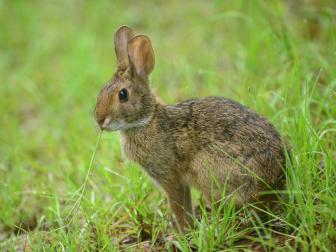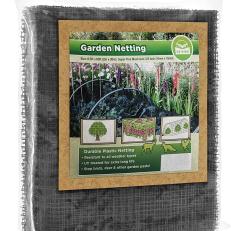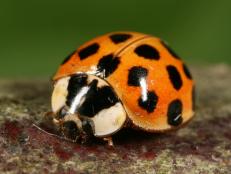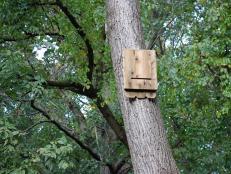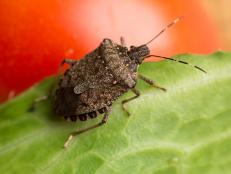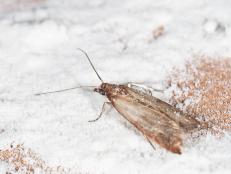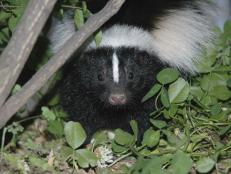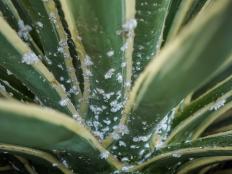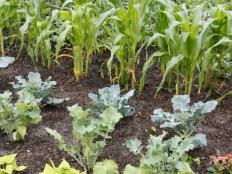How to Keep Rabbits Out of the Garden Without Harming Them
Fed up with rabbits damaging your garden? Follow these tips on how to stop rabbits from eating plants in your garden.

Mark Danaher for U.S. Fish & Wildlife Service at FWS.gov
Cuddly and cute, rabbits are perfect characters for children’s stories. But when it comes to your garden and landscape, they’re more of a terrorist, working under cover of darkness to destroy entire crops.
Given a choice, rabbits prefer munching young, tender growth on plants. Seedlings are a favorite target, including peas, beans, lettuce and other cool-season crops. But they’ll also chomp on everything from pansy to petunia and clematis to sunflowers. They also have a taste for fresh berries and other fruits.
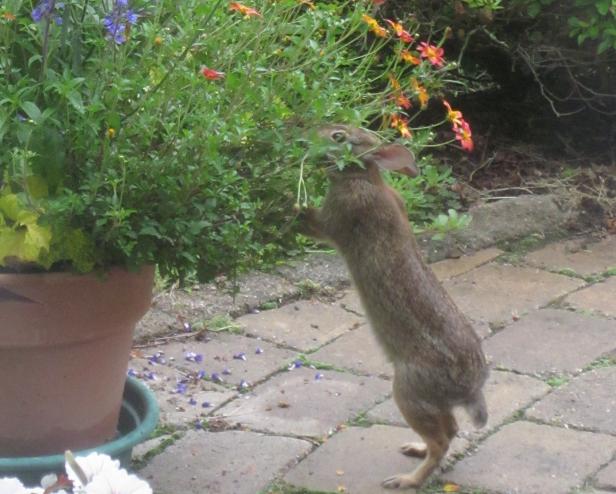
Julie Martens Forney
Just because a plant is in a tall pot doesn’t mean it’s out of the reach of hungry bunnies. Rabbits stand, lean and stretch to reach tasty flowers, like this Campfire Fireburst Bidens.
Adult rabbits can stand on their hind feet to get to plants that might seem out of reach. Young rabbits are especially troublesome, as they discover the world through their taste buds and nibble even plants that are traditionally rabbit-resistant.
How to Stop Rabbits from Eating Plants
The secret to preventing bunnies' smorgasbord is using several different techniques. Try some of these tips to beat the bunnies at their own game.
1. Exclude them. This is the surest way to prevent rabbit damage. Fencing is the top choice — use a 1/4- or 1/2-inch mesh for best success at a minimum height of two feet (to keep rabbits from jumping over it). Bury the edges six inches, bending the fence bottom outward (underground) to outsmart burrowing bunnies. For raised beds, make a crop cage using hardware cloth, zip ties and PVC pipe. In winter, protect woody plants from gnawing rabbits by surrounding stems with a cylinder of hardware cloth or mesh fencing.
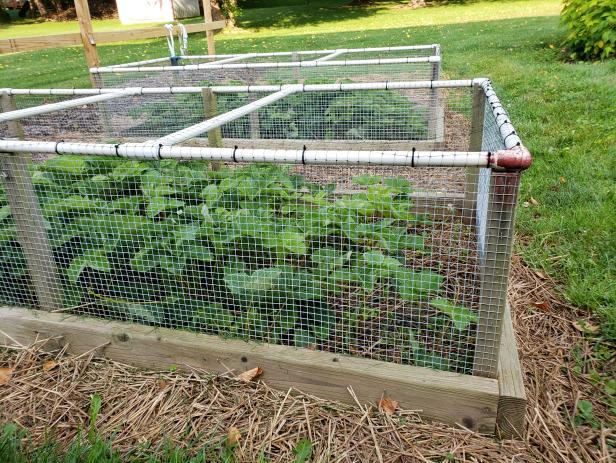
Jim Martens
Protect plants and young seedlings from hungry rabbits by covering them with a barrier. This strawberry patch outsmarts rabbits with a pvc-and-hardware-cloth cage that’s lightweight and easy to remove for berry picking.
Keep the fence at least two inches away from vulnerable stems so rabbits can’t press against it to reach a stem. If you live in an area with large snowfalls, use a taller fence so rabbits standing on a snowdrift can’t reach over to nibble plants.
2. Limit hiding places. Rabbits need spots to take cover from predators. Inspect your yard and think like a bunny. Look for things that could provide cover, including tall grass, a wood or brush pile or a shed or deck with no barrier to keep rabbits from going under it.
3. Give them a scare. Letting your dog run freely in your yard is one of the best things you can do to keep rabbits from hanging out. Other scare devices like fake owls, aluminum pie pans or flashing lights may work for a time, but rabbits eventually ignore them (once they realize they pose no real threat).
4. Repel them. Rabbit repellents work by releasing a scent that rabbits find repulsive (often dried blood or garlic oil) or making plants taste bad (hot pepper or dried blood sprays). Flavor-based repellents are usually more effective. Just be sure to follow instructions carefully, especially as it relates to reapplying after rain. Use care when spraying vegetables — you don’t want to make your harvest inedible. When food is scarce, rabbits will eat anything, so even go-to repellents might become ineffective.
5. Choose rabbit-resistant plants. Create a garden featuring plants that rabbits tend to dislike. This list includes lamb’s ears, herbs, onion family plants (allium, leek), cleome, Russian sage and rudbeckia (black-eyed Susan).
20 Flowers and Plants Rabbits Hate 21 Photos
Stop rabbits from munching on your garden with these pretty, bunny-resistant flower and plant picks.
6. Welcome weeds. Rabbits love clover and violets, plants that most people work to remove from lawns and planting beds. Let these plants grow, at least in a few places, and rabbits will tend to feed on these first before they hit your prize petunias.
7. Encourage predators. Rabbits have natural predators, including owls, foxes, snakes and hawks. Tend a wildlife-friendly yard to make these predators feel welcome and they’ll thank you by hunting rabbits.

.-Battle-on-the-Beach-courtesy-of-HGTV.-.jpg.rend.hgtvcom.196.196.suffix/1714761529029.jpeg)





